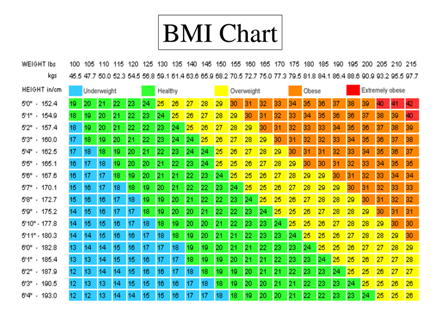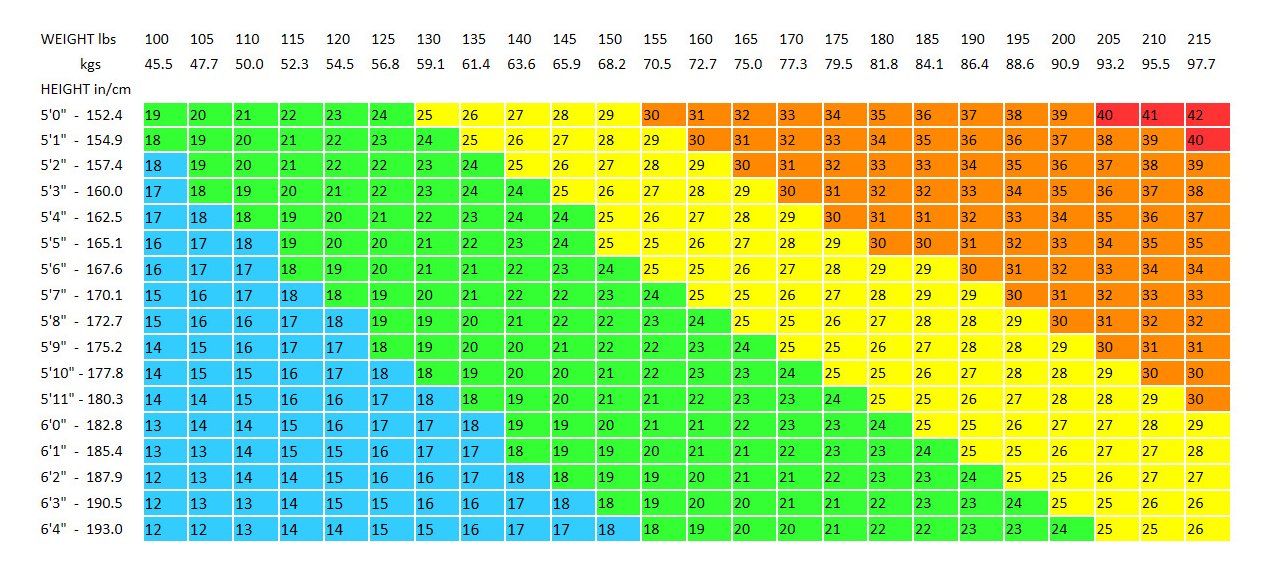Are you curious about where your weight stands in terms of health? Understanding your Body Mass Index (BMI) can give you a clear snapshot of your overall well-being.
If you’re a man looking to track your health using the metric system, the BMI chart for men in kilograms is an essential tool. It helps you see if your weight falls within a healthy range, or if it might be time to make some changes.
You’ll discover how to use the BMI chart effectively, what your numbers really mean, and why this simple calculation can be a game-changer for your health journey. Keep reading to take control of your health with confidence.
Bmi Basics
Understanding your Body Mass Index (BMI) is important for tracking health. BMI helps measure body fat based on weight and height. It offers a simple way to assess if your weight is healthy.
This section explains the basics of BMI for men using kilograms and meters. Learn what BMI is, how to calculate it, and the categories that define weight status.
What Is Bmi
BMI stands for Body Mass Index. It is a number that shows if a person is underweight, normal weight, overweight, or obese. Doctors use BMI to check health risks related to weight. It is not a perfect measure but works well for most adults.
How To Calculate Bmi In Kg And Meters
To find BMI, you need your weight in kilograms and height in meters. Use this formula: BMI = weight (kg) ÷ height (m)². For example, if you weigh 70 kg and are 1.75 meters tall, your BMI is 70 ÷ (1.75 × 1.75) = 22.9. This number helps you understand your weight status.
Bmi Categories For Men
BMI values fall into specific categories. These help show if weight is healthy or not. The main categories are:
- Underweight: BMI less than 18.5
- Normal weight: BMI 18.5 to 24.9
- Overweight: BMI 25 to 29.9
- Obesity: BMI 30 or higher
Men with a BMI in the normal range usually have lower health risks. Higher BMI values can increase risks of heart disease, diabetes, and other problems.

Credit: agritech.tnau.ac.in
Using The Bmi Chart
The BMI chart is a simple tool to check if a man’s weight is healthy. It uses height and weight to calculate a number. This number helps understand body fat levels. Using the BMI chart can guide men to maintain or reach a healthy weight.
Reading The Bmi Chart For Men
The chart shows height in meters or centimeters and weight in kilograms. Find your height on one side and your weight on the other. The spot where they meet gives your BMI number. It is easy to follow without needing complex math.
Interpreting Your Bmi Number
A BMI below 18.5 means underweight. Between 18.5 and 24.9 is a healthy weight. A BMI from 25 to 29.9 shows overweight. Above 30 means obesity, which can risk health. Use these ranges to understand your health status better.
Bmi Chart Examples In Kg
For a man who is 1.75 meters tall and weighs 70 kg, the BMI is 22.9. This falls in the healthy range. A man 1.80 meters tall and 85 kg has a BMI of 26.2, classified as overweight. A man 1.65 meters tall and 95 kg scores 34.9, which is obesity. These examples help relate BMI numbers to real cases.
Healthy Weight Ranges
Understanding healthy weight ranges helps men maintain good health. Body Mass Index (BMI) is a common tool that shows if weight is in a healthy range. It uses height and weight to give a number that suggests if weight is low, normal, or high. This section explains how to interpret BMI for men using kilograms.
Ideal Bmi Range For Men
The ideal BMI range for men is between 18.5 and 24.9. This range signals a healthy weight for most adult men. A BMI below 18.5 may mean underweight, which can cause health risks. A BMI over 24.9 may indicate overweight or obesity, raising the chance of diseases. Staying within this range supports overall well-being.
Adjusting For Age And Muscle Mass
Age changes how BMI affects health. Older men may have more body fat even with the same BMI. Muscle mass also affects BMI results. Men with high muscle may have a BMI over 24.9 but low fat. Use BMI as a guide, not a strict rule, especially for athletes and older adults.
Bmi And Body Composition
BMI does not measure body fat directly. It cannot separate fat from muscle or bone. Body composition tests give a clearer picture of fat levels. Combining BMI with other measures helps understand health better. Tracking body composition along with BMI improves weight management.

Credit: www.alamy.com
Limitations Of Bmi
BMI, or Body Mass Index, is a quick way to estimate if a man’s weight is healthy. It uses weight and height to give a number. This number fits into categories like underweight, normal, overweight, or obese. While easy to calculate, BMI has clear limits. It does not tell the whole story about health or body composition.
When Bmi Can Be Misleading
BMI does not separate muscle from fat. A very muscular man may have a high BMI but low body fat. Older men may have a normal BMI but more fat and less muscle. BMI also does not consider bone density or body shape. These factors can make BMI numbers less accurate for some men.
Muscle Vs Fat Considerations
Muscle weighs more than fat. Men with more muscle may appear overweight by BMI standards. Athletes often fall into this group. Fat is less dense and can vary in location on the body. BMI does not measure fat distribution, which affects health risks.
Other Health Metrics To Consider
Waist size gives clues about fat around organs. This fat is linked to higher health risks. Body fat percentage is a better measure of fitness. Blood pressure, cholesterol, and blood sugar levels also matter. These numbers help understand health beyond BMI alone.
Improving Your Bmi
Improving your BMI is a key step toward better health and wellness. A healthy BMI reflects balanced weight in relation to height. It lowers risks of heart disease, diabetes, and other problems. Small changes in lifestyle can help adjust your BMI to a healthier range. Focus on diet, exercise, and regular monitoring for steady progress.
Diet Tips For Healthy Weight
Choose whole foods like fruits, vegetables, and grains. Avoid processed snacks and sugary drinks. Eat smaller portions to reduce calorie intake. Include lean proteins such as chicken, fish, or beans. Drink plenty of water throughout the day. These habits support weight control and improve BMI.
Exercise And Bmi
Regular exercise helps burn calories and build muscle. Aim for at least 30 minutes of moderate activity daily. Walking, cycling, and swimming are good choices. Strength training boosts metabolism and tones your body. Exercise also improves mood and energy levels. Consistent movement aids in achieving a healthy BMI.
Tracking Progress With Bmi
Check your BMI regularly to see changes over time. Use a reliable BMI chart for men in kg for accuracy. Record your weight and height measurements monthly. Tracking helps maintain motivation and adjust habits as needed. Celebrate small improvements to stay focused on your goals.
Special Considerations
Understanding BMI for men involves more than just numbers. Special factors affect how BMI applies to different groups. These factors help interpret BMI results correctly and promote better health decisions.
Bmi For Older Men
Age changes body composition. Older men often lose muscle and gain fat. BMI might not reflect these changes well. A higher BMI in older men could mean more fat or more muscle loss. Doctors often use other tests along with BMI for older adults.
Ethnic And Racial Differences
BMI standards may not fit all ethnic groups equally. Some groups have higher health risks at lower BMIs. Body fat distribution varies across races. This can affect health risks linked to BMI. Knowing these differences helps tailor health advice better.
Consulting Healthcare Providers
BMI is a helpful tool but not a full health measure. Healthcare providers consider many factors beyond BMI. They look at diet, activity, and medical history. Talk to a doctor for a complete health assessment. This ensures personalized and accurate advice.
Tools And Resources
Understanding your BMI is easier with the right tools and resources. These tools help you quickly measure and track your BMI using kilograms. They make health monitoring simple and clear. Access to these resources supports better weight and health management for men.
Online Bmi Calculators
Online calculators let you find your BMI fast. Enter your weight in kilograms and height in meters. The calculator does the math instantly. Many websites offer free, easy-to-use BMI calculators. They also explain what your BMI number means. This helps you understand your body health better.
Printable Bmi Charts In Kg
Printable charts provide a quick reference for BMI values. These charts show ranges for underweight, normal, overweight, and obesity. You can download and print them for daily use. Keep one on your fridge or in your gym bag. It is a handy tool to check your BMI anytime.
Apps For Bmi Tracking
BMI tracking apps help you monitor changes over time. They store your weight and height data securely. Some apps offer reminders to update your measurements. Visual charts display your BMI progress clearly. Many apps also suggest health tips based on your BMI results.

Credit: www.hdfclife.com
Conclusion
Understanding the BMI chart for men in kilograms helps track health simply. It shows if weight falls in healthy, underweight, or overweight ranges. Use it to keep a balanced lifestyle and avoid health risks. Remember, BMI is a guide, not a full health measure.
Consult health experts for a complete view. Stay informed and use the chart as a helpful tool. Small changes in weight can improve overall well-being. Keep checking your BMI to maintain a healthy life.



